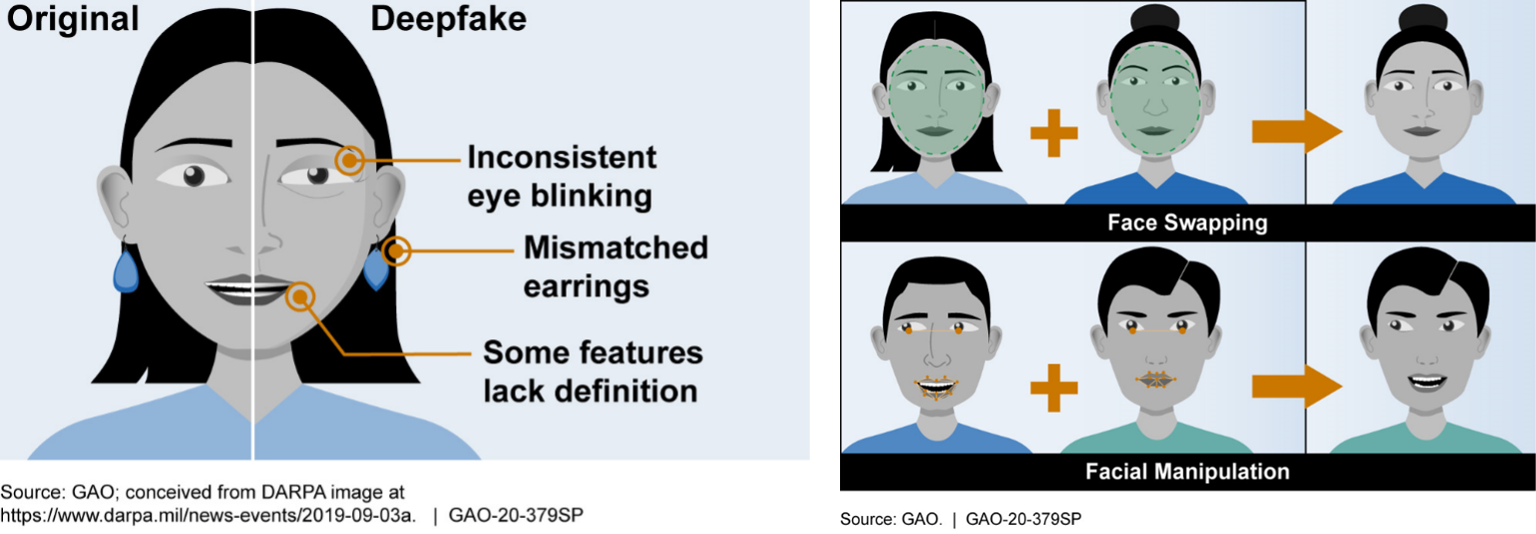Deepfakes: AI-Generated Synthetic Media – Can You Spot Them?
A deepfake is a type of synthetic media generated through deep learning algorithms, often involving artificial intelligence (AI). These algorithms are used to manipulate or replace audio, video, or images to depict something that didn't occur or to make someone appear to say or do something they never did.
Educating ourselves about deepfakes is an essential step in combating the spread of deceptive content and safeguarding against potential risks.
How can you spot a deepfake?
While deepfakes are becoming increasingly sophisticated, and there's no single tell-tale sign of how to spot a fake, there are still some signs that you can look out for to identify them:
- Unnatural Facial Expressions or Movements: Deepfakes may exhibit subtle glitches or unnatural movements in the subject's face or body.

- Pay attention to the face. High-end deepfake manipulations are almost always facial transformations.
- Pay attention to the cheeks and forehead. Does the skin appear too smooth or too wrinkly? Is the agedness of the skin similar to the agedness of the hair and eyes? Deepfakes may be incongruent on some dimensions.
- Pay attention to the eyes and eyebrows. Do shadows appear in places that you would expect? Deepfakes may fail to fully represent the natural physics of a scene.
- Pay attention to the glasses. Is there any glare? Is there too much glare? Does the angle of the glare change when the person moves? Once again, deepfakes may fail to fully represent the natural physics of lighting.
- Pay attention to the facial hair or lack thereof. Does this facial hair look real? Deepfakes might add or remove a mustache, sideburns, or beard; but, deepfakes may fail to make facial hair transformations fully natural.
- Inconsistent Audio-Visual Cues: The audio may not sync perfectly with the lip movements, or there may be discrepancies between the subject's voice and their actions.
- Contextual Clues: Consider the context of the content. If it seems highly unlikely or out of character for the individual depicted, it could be a deepfake.
- Source Verification: Verify the source of the content and look for signs of manipulation or tampering.
What are deepfakes used for?
Deepfakes can be used for various purposes, both benign and malicious. Some common applications include:
- Fraud and Scams: Deepfakes can be used for fraudulent activities, such as impersonating someone for financial gain or committing identity theft.
- Misinformation and Fake News: One of the most concerning applications is the creation of deceptive content, such as spreading false information, defaming individuals, or manipulating public opinion.
- Political Manipulation: They can be employed to create misleading political propaganda, manipulate elections, or damage the reputation of public figures.
- Entertainment: Deepfakes have been used to create humorous videos or mimic famous personalities for entertainment purposes.
- Creative Projects: They are sometimes utilized in filmmaking or other creative endeavors to bring fictional characters to life or enhance visual effects.
What are risks associated with deepfakes?
Deepfakes pose significant risks and ethical concerns due to their potential to deceive and manipulate. Some reasons why they are problematic include:
- Misinformation: Deepfakes can spread false information and contribute to the erosion of trust in media and information sources.
- Privacy Concerns: They can infringe upon individuals' privacy rights by superimposing their likeness into compromising or fabricated situations.
- Identity Theft: Deepfakes can be used to impersonate individuals, leading to identity theft, reputational damage, or extortion.
- Manipulation of Reality: They blur the line between truth and fiction, making it difficult to discern genuine content from manipulated content.
- Potential for Harm: Deepfakes have the potential to cause harm by inciting violence, damaging relationships, or undermining democratic processes.
Test Your Deepfake Identifying Skills
Northwestern's Kellogg School of Management has developed a fantastic site where anyone can test their deepfake identifying skills. This is a great tool to leverage when learning how to spot deepfakes.
In this "Detect Fakes" experiment, you will be presented with a series of images that may either be real photographs or AI-generated images. Examine each image carefully—remembering the How can you spot a deepfake? information you just learned—and share whether you believe it is AI-generated or real, and how confident you are in this judgment.
https://detectfakes.kellogg.northwestern.edu
If you have any questions, please contact the IT Service Desk.




